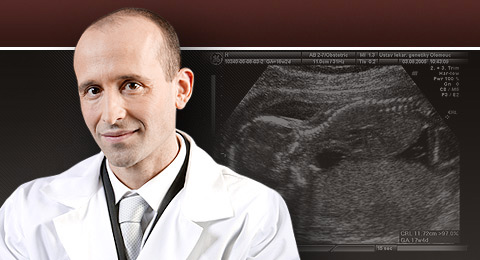Ľubušký M., Berta E., Procházka M., Marek O., Kudela M. Development of incidence of post-dural puncture headache in patients undergoing caesarean section in spinal anaestehesia at the department of obstetrics and gynecology in Olomouc during 2003-2004. Čas. Lék. čes., 2006, 145 (3), s. 218-222.
ABSTRACT
Background: To analyse the incidence of post-dural puncture headache (PDPH) in patients undergoing caesarean section in spinal anaesthesia at the Department of Obstetrics and Gynecology in Olomouc in 2003-2004.
Methods and Results: Post-dural puncture headache (PDPH) following caesarean section in spinal anaesthesia in 2003 was retrospectively analysed. Subsequently, measures to reduce the incidence of this complication (use of Whitacre and Atraucan needles) were implemented. In 2004 patients were followed prospectively. 54 caesarean sections – 16,3 % (54/331) were performed in spinal anaesthesia in 2003. Following needles were used to establish spinal blockade: Quincke 22G – 35,2 % (19/54), Quincke 25G – 50 % (27/54), Atraucan 26G – 14,8 % (8/54). Post-dureal puncture headache (PDPH) occured in 9 cases – 16,6 % (9/54) (22G – 7x, 25G – 2x), the onset of symptoms occured after 24 – 65 hours after spinal blockade (mean 41,7). It was necessary to perform epidural blood patch (EBP) in 7 cases – 77 % (7/9) – 12,9 % (7/54) (22G – 5x, 25G – 2x). Epidural blood patch (EBP) was performed after 7 – 45 hours after the onset of symptoms (median 28,4). The age of patients at the time of delivery ranged between 22 – 43 years (median 34,5). 36 caesarean sections – 8,4 % (36/426) were performed in spinal anaesthesia in 2004. Following needles were used to establish spinal blockade: Whitacre 27G – 63,9% (23/36), Atraucan 26G – 13,9 % (5/36), Quincke 25G – 11,1 % (4/36), Quincke 22G – 11,1 % (4/36). Post-dural puncture headache (PDPH) occured in 3 cases – 8,3 % (3/36) (25G – 1x, 22G – 2x), the onset of symptoms occured after 24 – 54 hours after spinal blockade (median 36,0). It was not necessary to perform epidural blood patch. The age of patients at the time of delivery ranged between 22 – 39 years (median 28,5).
Conclusion: Incidence of post-dural puncture headache (PDPH) is significantly higher in pregnant women and in puerperal period compared to general population. Use of appropriate needles for spinal blockade and adequate level of anaesthesiologist´s skills lead to lower incidence of post-dural puncture headache (PDPH) after caesarean section performed in spinal anaesthesia.
Key words: post-dural puncture headache, PDPH, epidural blood patch, spinal blockade, caesarean section


Contact
Professor Marek Lubusky, MD, PhD, MHA
THE FETAL MEDICINE CENTRE
Department of Obstetrics and Gynecology
Palacky University Olomouc, Faculty of Medicine and Dentistry
University Hospital Olomouc
Zdravotníků 248/7, 779 00 Olomouc, Czech Republic
Tel: +420 585 852 785
Mobil: +420 606 220 644
E-mail: marek@lubusky.com
Web: www.lubusky.com


